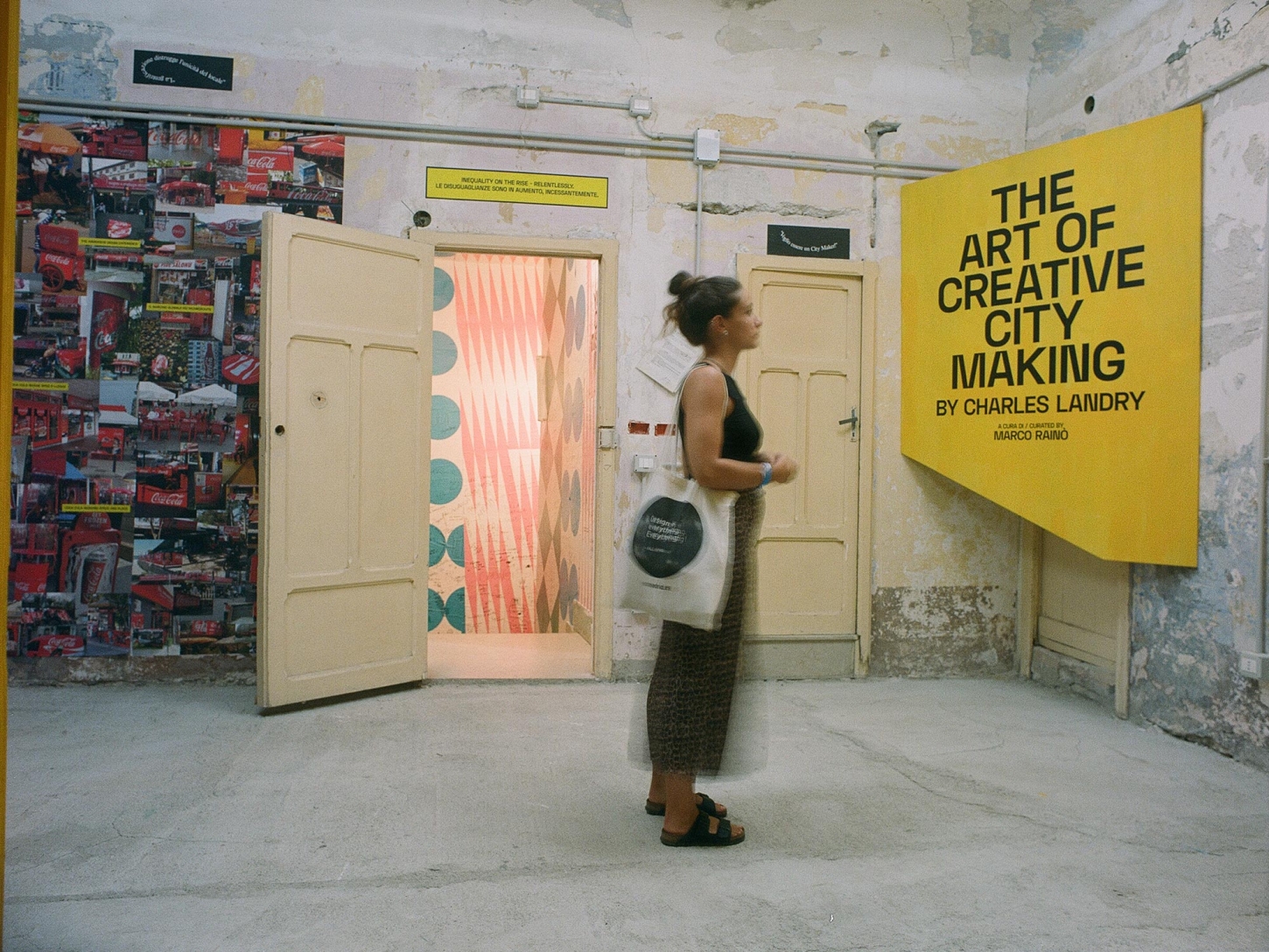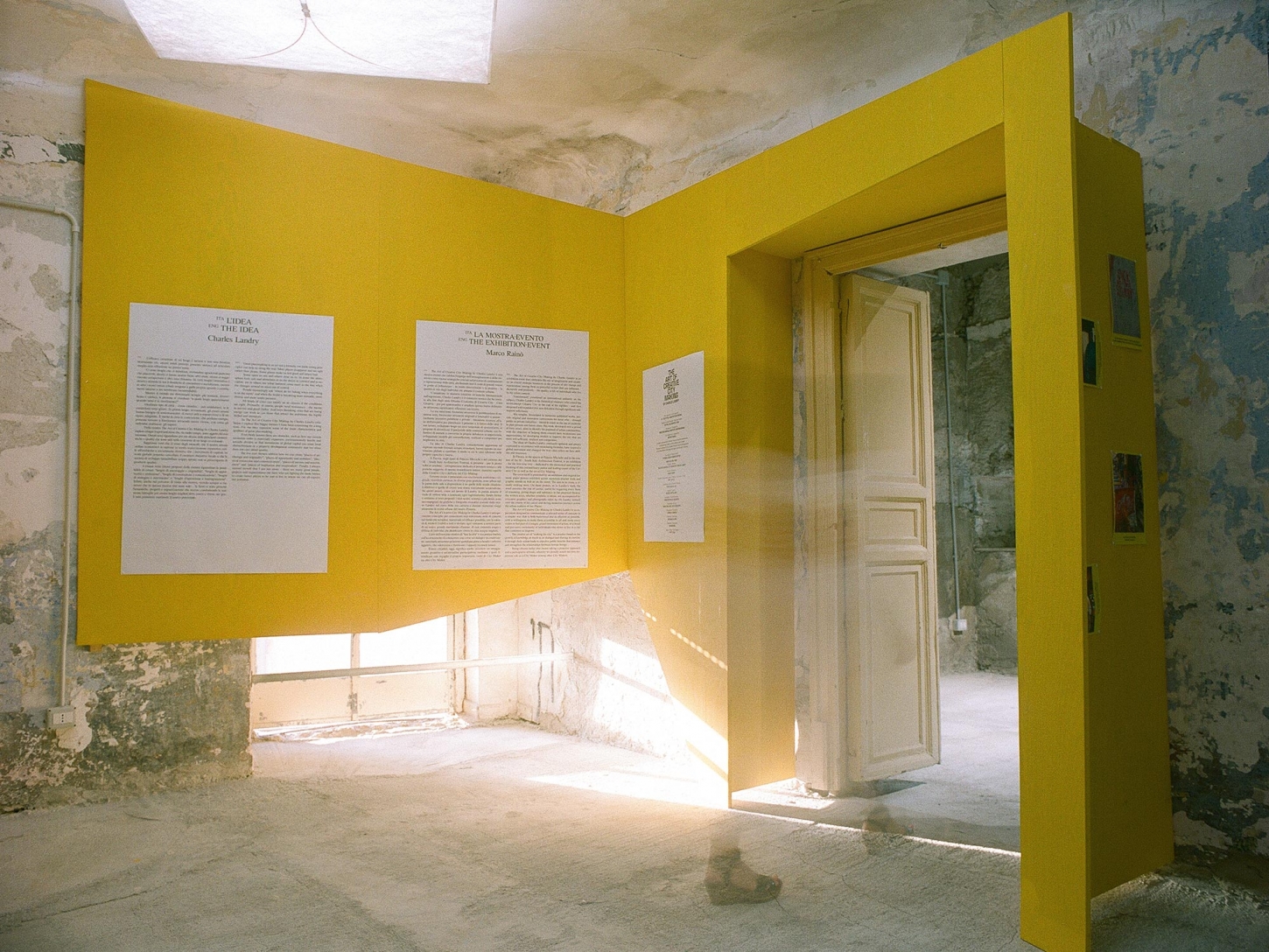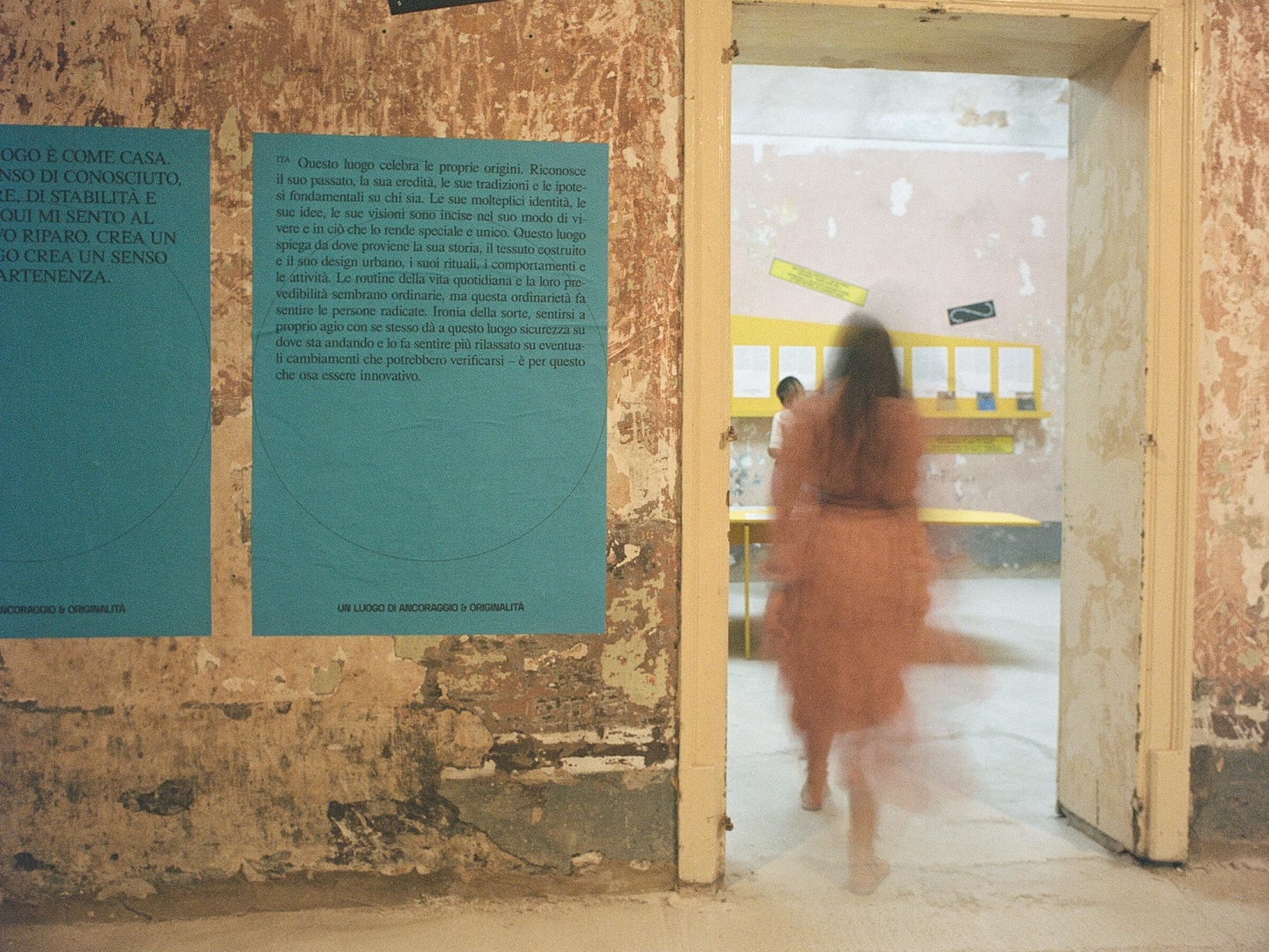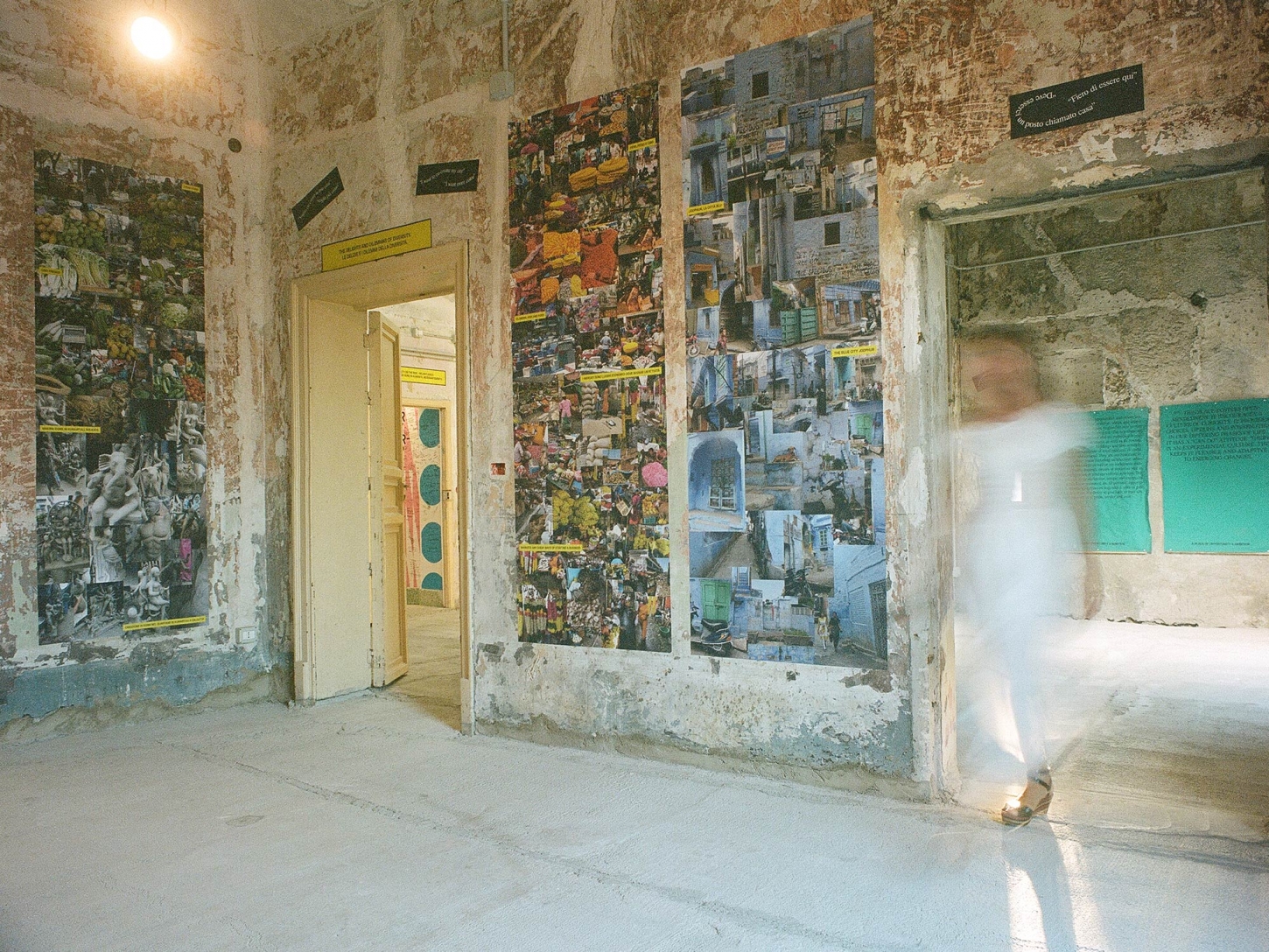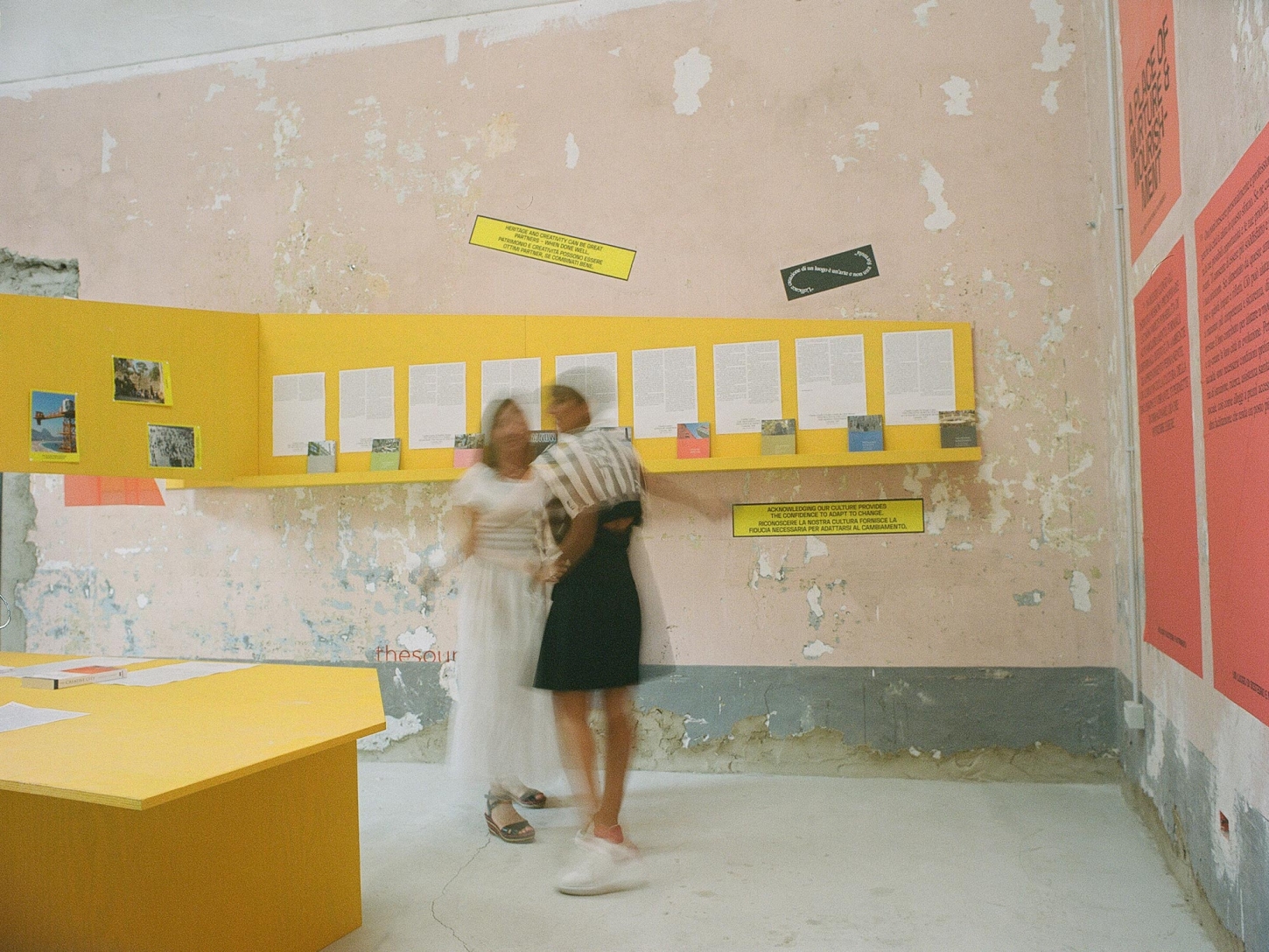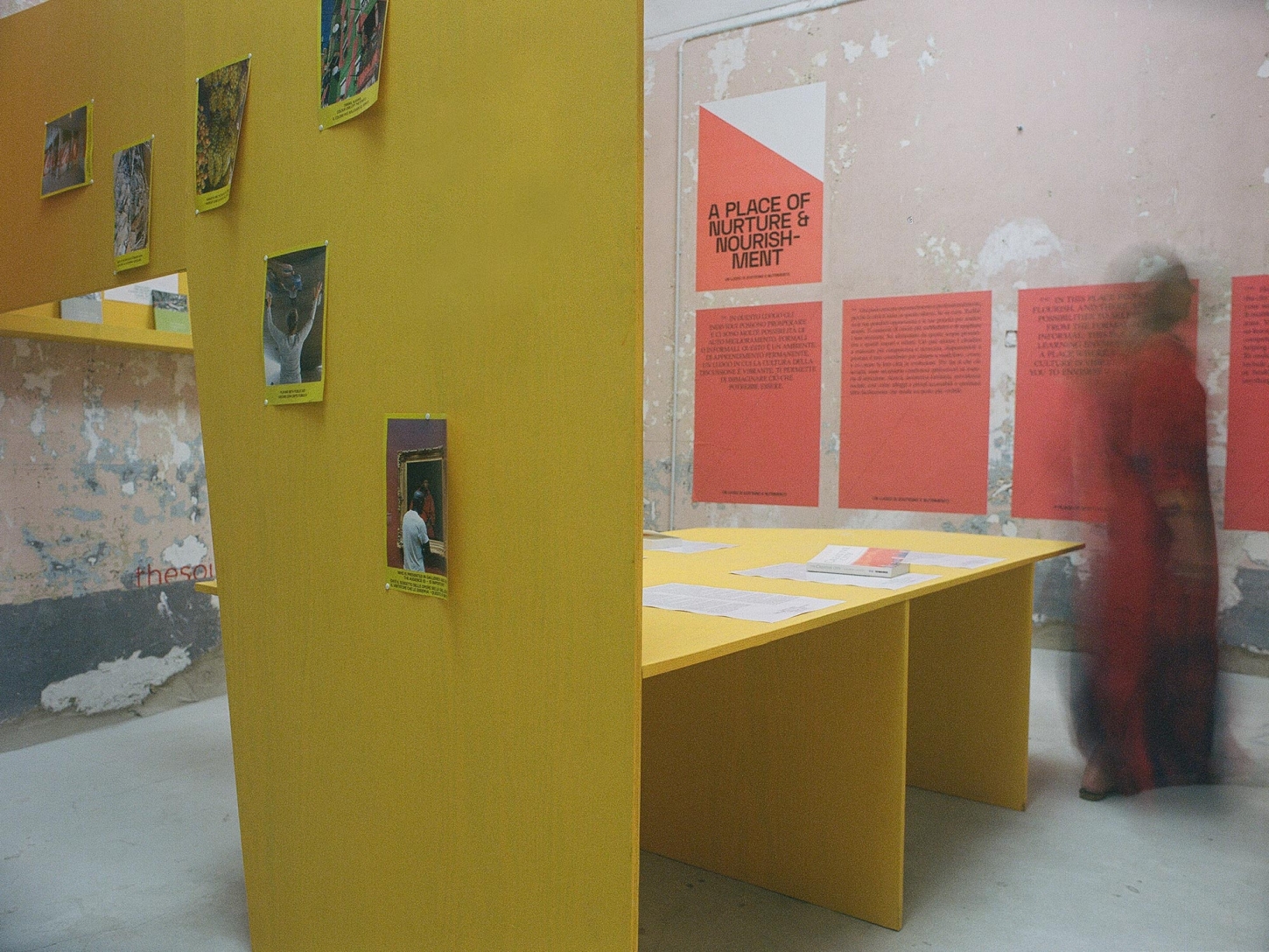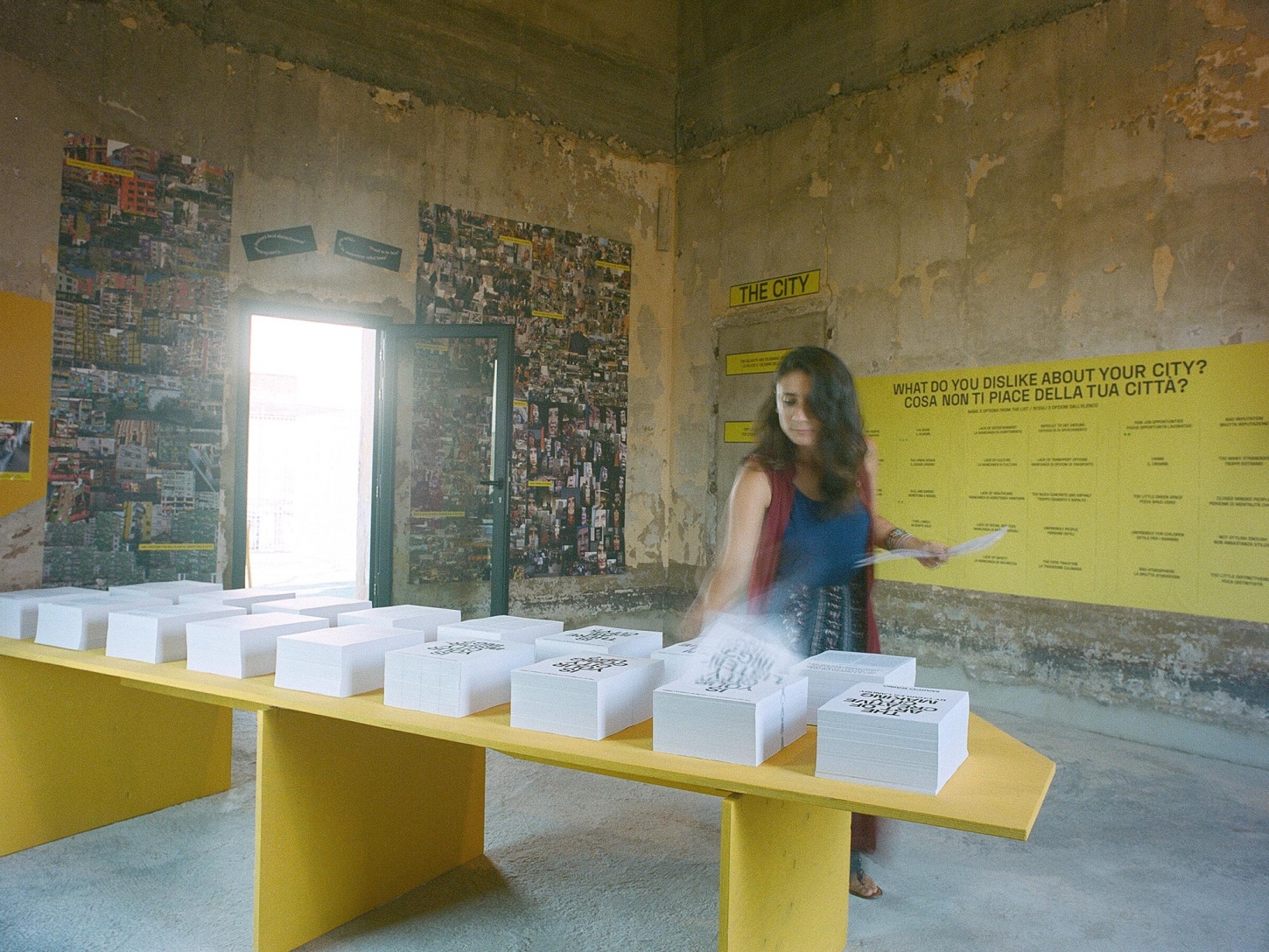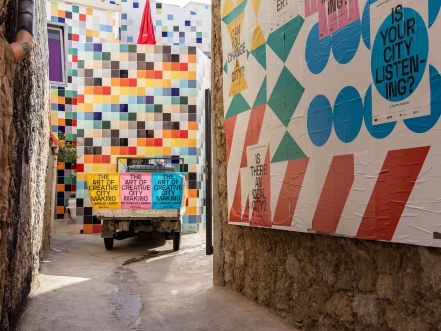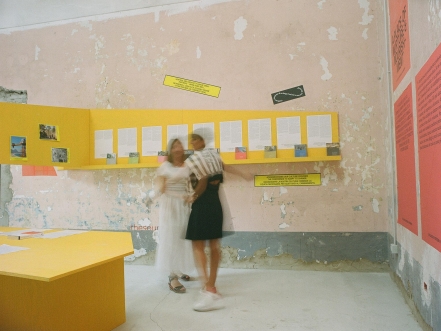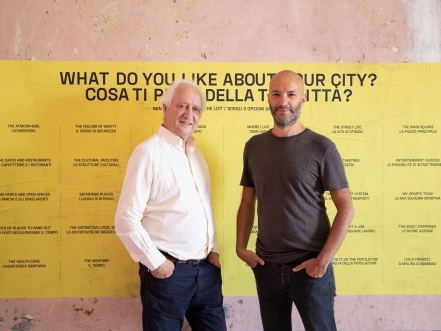SI – South Italy Architecture Festival
The Art of Creative City Making by Charles Landry
The Art of Creative City Making by Charles Landry is an exhibition-event that celebrates the use of imagination and creativity as crucial strategic resources in the process of city change and regeneration, seeing them as powerful vectors that can influence – decisively and positively – the quality of life of individuals who live in the urban context.
In Favara, in the spaces of Palazzo Miccichè and in the context of the SI – South Italy Architecture Festival, there is – for the first time ever – an exhibition dedicated to theoretical thought and practices suggested by Charles Landry, leading expert of the Creative City and the art of City Making.
The event itself is presented by an ambitious and original formula: paper posters exhibited across numerous interior walls and graphic stands as well as on the street. The aim is to create a visually striking story. On these posters, as in Landry’s work, the word assumes the role of carrier, useful for triggering every form of reasoning, giving shape and substance to the proposed themes: the written texts, whether synthetic or dense, are accompanied by evocative graphics and photographs taken by the Landry himself over the course of his career and during numerous journeys across the urban realities of our Planet.
The exhibition setting, deliberately minimal and essential, built with simple materials and geometries, dialogues with the bare and rough rooms of the suggestive Palazzo Miccichè in a new way.
The Art of Creative City Making by Charles Landry is an experiment designed to communicate a selected series of concepts in the simplest way, that is both transversal and as effective as possible, with a willingness to make them accessible to all and invite every visitor to feel part of a unique, grand movement of action, of a broad and pervasive community of individuals who desire to live in a city that continues to improve.
Promoted by Direzione Generale Creatività Contemporanea del Ministero per i beni e le attività culturali
Supported by British Council
The Art of Creative City Making by Charles Landry is an exhibition-event that celebrates the use of imagination and creativity as crucial strategic resources in the process of city change and regeneration, seeing them as powerful vectors that can influence – decisively and positively – the quality of life of individuals who live in the urban context.
In Favara, in the spaces of Palazzo Miccichè and in the context of the SI – South Italy Architecture Festival, there is – for the first time ever – an exhibition dedicated to theoretical thought and practices suggested by Charles Landry, leading expert of the Creative City and the art of City Making.
The event itself is presented by an ambitious and original formula: paper posters exhibited across numerous interior walls and graphic stands as well as on the street. The aim is to create a visually striking story. On these posters, as in Landry’s work, the word assumes the role of carrier, useful for triggering every form of reasoning, giving shape and substance to the proposed themes: the written texts, whether synthetic or dense, are accompanied by evocative graphics and photographs taken by the Landry himself over the course of his career and during numerous journeys across the urban realities of our Planet.
The exhibition setting, deliberately minimal and essential, built with simple materials and geometries, dialogues with the bare and rough rooms of the suggestive Palazzo Miccichè in a new way.
The Art of Creative City Making by Charles Landry is an experiment designed to communicate a selected series of concepts in the simplest way, that is both transversal and as effective as possible, with a willingness to make them accessible to all and invite every visitor to feel part of a unique, grand movement of action, of a broad and pervasive community of individuals who desire to live in a city that continues to improve.
Promoted by Direzione Generale Creatività Contemporanea del Ministero per i beni e le attività culturali
Supported by British Council
